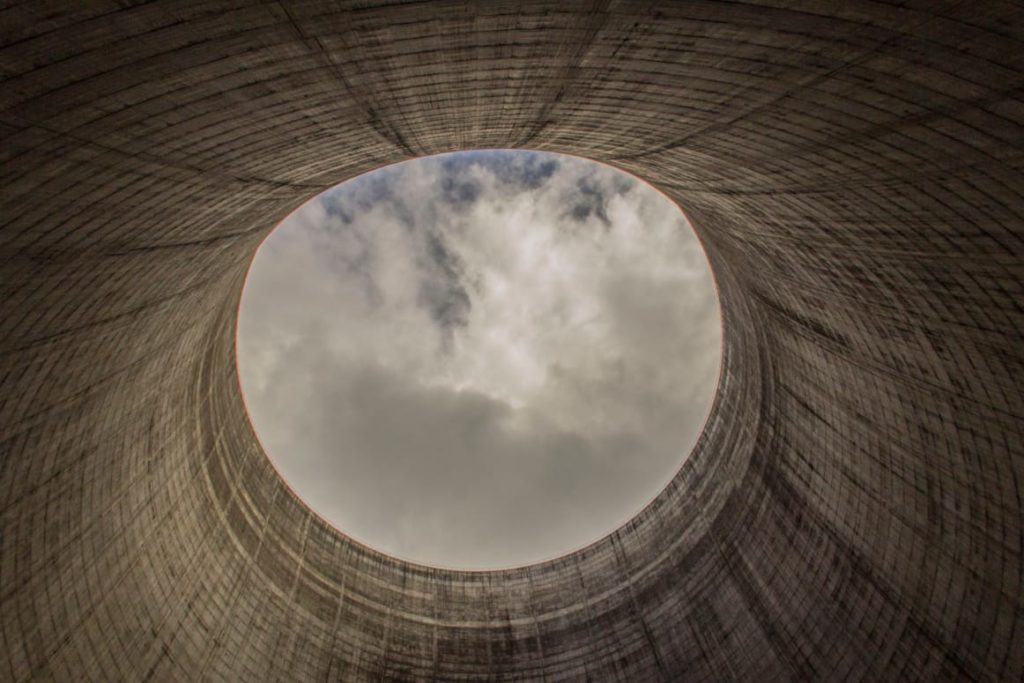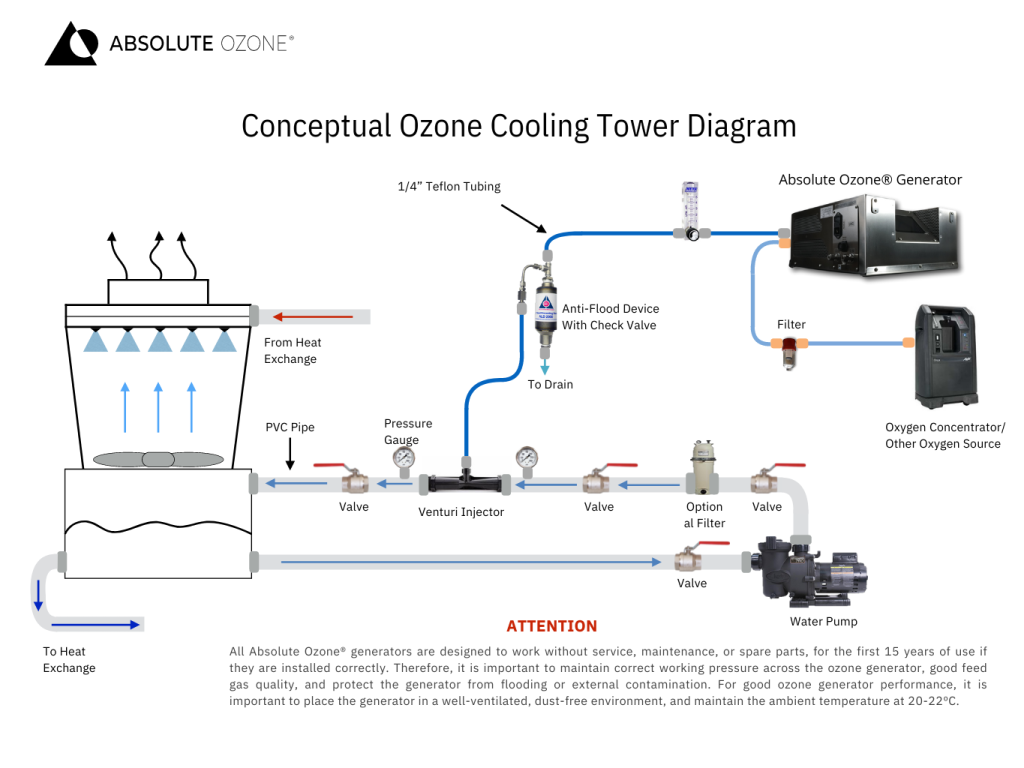
KEY FEATURES:
- Money savings due to lower operating costs over time
- No on-site chemical inventory
- No toxicant discharge, chloramines
- Water conservation due to no TDS buildup from disinfectants
- Ozone is produced on-site and requires no storage of dangerous chemicals
- Lower corrosion rates of the system
- No regular disinfection system maintenance required
- No special training for employees operating the system
- Elimination of Legionella spread and hazard to human health
- Eligibility for LEED certification
OZONE FOR COOLING TOWERS
Cooling water systems are prone to several problems, including deposition, corrosion, and biofouling. For example, Pathogenic bacteria like Legionella Pneumophila can exacerbate deposition, corrosion, and fouling in cooling water systems by acting as a catalyst or nucleation point for these issues. The traditional methods use chemical inhibitors and biocides, but they also present the problems of handling, storage, and environmental impacts. In recent years, the use of ozone for cooling tower treatment has increased significantly, offering an excellent alternative to traditional methods. Ozone is an efficient biocide that decomposes rapidly, making it a safe and environmentally friendly option. Additionally, ozone has the potential for water conservation.
Using Ozone in cooling water system:
With advancements in generator efficiency and declining costs, Ozone is becoming a popular alternative. In addition to being an excellent biocide, Ozone decomposes rapidly, so any toxicity concerns are minimal. Furthermore, they have the potential for water reuse.
According to scientific studies, the cooling tower water ozone concentration should be no lower than 0.1 g/m3 (ppm). Following the recommendations choosing an ozone generator for your needs are relatively simple, as it depends on the total capacity of your cooling system.
For example, for a small cooling tower with a capacity of 10 m3, only 1 g of ozone needs to be dissolved in the tower’s sump water. However, the half-life of ozone at 35˚C is ~8 minutes to compensate for ozone decay 11 g/h of ozone should be dissolved, which translates to 15 g/h of ozone production.
Absolute Ozone® NANO generator will be perfect for this application. Also, it will offer contingency when ozone demand increases by seasonal organic dust blown.
Click here to view the NANO 15 Ozone Generator
Since the amount of dissolved ozone depends on the concentration of ozone gas produced. It is essential to consider the performance of the ozone generator when selecting one for your ozone treatment. At Absolute Ozone®, we offer the best generators with the highest concentration of ozone gas in air-cooled generators, ensuring guaranteed performance.
Benefits of Ozone Application for Cooling Tower Water
- Safe and User-Friendly: Ozone application is safe and easy to use, making it a convenient option for businesses.
- Low Maintenance Costs: Ozone application requires low maintenance costs, making it a cost-effective solution.
- On-Site Ozone Production: Ozone is produced on-site, eliminating the need for storage of dangerous chemicals and reducing the risk of accidents.
- No Additional Disinfectants Required: Ozone is an effective disinfectant, and therefore, no additional disinfectants are required.
- Microorganisms Cannot Develop Resistance: Ozone is an effective disinfectant that prevents the development of resistant microorganisms, even after prolonged use.
- High Efficiency: A residual ozone concentration of 0.1 to 0.2 ppm is effective in keeping the cooling tower and the cooling circuit clean, making it a highly efficient disinfectant.
- Biofilm Removal: Ozone is effective in removing biofilms, leading to higher efficiency of heat exchangers and reduced maintenance costs.
- Effective Against Legionella: Due to its biofilm removal capacity, ozone is effective against Legionella, a bacterium that can cause severe respiratory illness.
- Low Corrosion Rates: Ozone does not contain chlorinated compounds and has low corrosion rates, making it a safe and effective treatment option for cooling tower water.
- No Persistent Chemicals: Ozone breaks down into oxygen and does not leave any hazardous chemicals or disinfectants in the bleed.
- Replaces Disinfectants, Dispersants, and Inhibitors: In some cases, ozone can replace disinfectants, dispersants, and inhibitors, leading to lower operational and overall costs.
- Effective in a Wide pH Range: Ozone is effective in a wide pH range, making it a versatile and reliable option for cooling tower water treatment.
- Effective Against Mussel Growth: Ozone is also effective against mussel growth, further improving the efficiency and safety of cooling tower water treatment.
Ozone application in cooling tower water provides additional benefits. By inhibiting or removing biological deposits more effectively than chemical treatment, ozone treatment can enhance the performance of heat exchanger units. Studies have shown improvements in efficiency ranging from no change to up to 20% for chilled water systems.
Field tests have also demonstrated that using ozone for water treatment reduces the blowdown rate, resulting in cost savings from decreased chemical use and makeup water requirements, reduced wastewater volume, and avoidance of disposal surcharges due to residual chemicals.
Moreover, ozone treatment has environmental benefits, as fewer chlorine or chlorinated compounds and other chemicals are discharged. Ozone systems can also help reduce biofilm buildup, which serves as a binding agent for scale on heat exchange surfaces. This reduction leads to higher heat transfer rates, resulting in lower chiller head pressure, increased efficiency, and lower energy consumption.
Biofilms are a layer of microorganisms contained in a matrix that forms on surfaces in contact with water. They can protect pathogens from concentrations of biocides that would otherwise kill or inhibit those organisms freely suspended in water. By removing biofilms effectively, ozone application can help improve water safety and reduce the risk of contamination.
Contact us now if you need more information about your cooling tower system.


